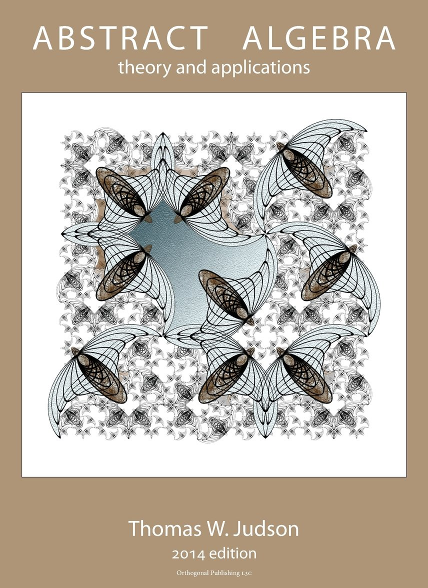<exercises xml:id="fill-in-exercises-old">
<title>Fill-In Exercises (Old Style)</title>
<introduction>
<p>
This section has <term>fill-in-the-blank</term>
(<init>FITB</init>) exercises that use an old syntax.
They were designed for projects transitioning from Runestone's ReST syntax to <pretext/>.
So they are really only here for testing,
and not for any sort of documentation.
They will not receive support or enhancements.
<foreign>Caveat emptor</foreign>.
</p>
</introduction>
<exercise label="fillin-integer">
<title>Fill-In, Integer Answer</title>
<statement>
<p>
The game of bowling uses <var width="28"/> pins that you try to knock down.
(This answer blank has been set to be very wide.)
</p>
</statement>
<setup>
<var>
<condition number="10">
<feedback>
<p>
Arranged in a triangle, there are <m>1+2+3+4 = 10</m> pins,
a so-called <term>triangular</term> number.
</p>
</feedback>
</condition>
<condition number="16">
<feedback>
<p>
<em>Close</em>!
You may have used hexadecimal notation,
when you did not really mean to.
</p>
</feedback>
</condition>
<condition string=".*">
<feedback>
<p>
Incorrect.
</p>
</feedback>
</condition>
</var>
</setup>
</exercise>
<exercise label="fillin-string-integer">
<title>Fill-In, String and Number Answers</title>
<statement>
<p>
Complete the following line of a Python program so that it will declare an integer variable <c>age</c> with an initial value of <c>5</c>. (These two answer blanks have been set to be very short.)
</p>
<p>
<var width="2"/> <c>age = </c> <var width="3"/><c>;</c>
</p>
</statement>
<setup>
<var>
<condition string="int">
<feedback>
<p>
A variable of type <c>int</c> is appropriate for whole number ages.
</p>
</feedback>
</condition>
<condition string=".*">
<feedback>
<p>
Remember that Java uses just the first three letters of the word
<q>integer</q>
to define an integral type.
</p>
</feedback>
</condition>
</var>
<var>
<condition number="5">
<feedback>
<p>
An integer variable may be initialized to a value.
</p>
</feedback>
</condition>
<condition string=".*">
<feedback>
<p>
Use <c>5</c> as the initial value of the variable.
</p>
</feedback>
</condition>
</var>
</setup>
</exercise>
<exercise label="fillin-case-insensitive">
<title>Fill-In, Case-Insensitive Answer</title>
<statement>
<p>
The word <var/> is the opposite of
<q>yes</q>. (Try a mixture of upper and lower-case letters.)
</p>
</statement>
<setup>
<var case="insensitive">
<!-- Note, no "p" in "feedback" -->
<condition string="no">
<feedback>
The correct answers are no, No, nO, and NO.
</feedback>
</condition>
<condition string=".*">
<feedback>
Incorrect.
</feedback>
</condition>
</var>
</setup>
</exercise>
<exercise label="fillin-decimal">
<title>Fill-In, Decimal Answer</title>
<statement>
<p>
The decimal number <var/> is an approximation of
<m>\sfrac{1}{3}</m> to within three significant figures. (
<url href="https://en.wikipedia.org/wiki/Significant_figures" visual="en.wikipedia.org/wiki/Significant_figures">Wikipedia</url>).
</p>
</statement>
<setup>
<var>
<!-- Note, no "p" in "feedback" -->
<condition number="0.333" tolerance="0.0005">
<feedback>
<p>
Any value in the interval <m>0.333\pm 0.0005</m> is correct.
</p>
</feedback>
</condition>
<condition string=".*">
<feedback>
<p>
Incorrect.
Did you provide three <em>significant figures</em>?
</p>
</feedback>
</condition>
</var>
</setup>
</exercise>
</exercises>
Exercises 3.18 Fill-In Exercises (Old Style)
View Source for exercises
This section has fill-in-the-blank (FITB) exercises that use an old syntax. They were designed for projects transitioning from Runestone’s ReST syntax to PreTeXt. So they are really only here for testing, and not for any sort of documentation. They will not receive support or enhancements. Caveat emptor.
1. Fill-In, Integer Answer.
View Source for exercise
<exercise label="fillin-integer">
<title>Fill-In, Integer Answer</title>
<statement>
<p>
The game of bowling uses <var width="28"/> pins that you try to knock down.
(This answer blank has been set to be very wide.)
</p>
</statement>
<setup>
<var>
<condition number="10">
<feedback>
<p>
Arranged in a triangle, there are <m>1+2+3+4 = 10</m> pins,
a so-called <term>triangular</term> number.
</p>
</feedback>
</condition>
<condition number="16">
<feedback>
<p>
<em>Close</em>!
You may have used hexadecimal notation,
when you did not really mean to.
</p>
</feedback>
</condition>
<condition string=".*">
<feedback>
<p>
Incorrect.
</p>
</feedback>
</condition>
</var>
</setup>
</exercise>
The game of bowling uses pins that you try to knock down. (This answer blank has been set to be very wide.)
2. Fill-In, String and Number Answers.
View Source for exercise
<exercise label="fillin-string-integer">
<title>Fill-In, String and Number Answers</title>
<statement>
<p>
Complete the following line of a Python program so that it will declare an integer variable <c>age</c> with an initial value of <c>5</c>. (These two answer blanks have been set to be very short.)
</p>
<p>
<var width="2"/> <c>age = </c> <var width="3"/><c>;</c>
</p>
</statement>
<setup>
<var>
<condition string="int">
<feedback>
<p>
A variable of type <c>int</c> is appropriate for whole number ages.
</p>
</feedback>
</condition>
<condition string=".*">
<feedback>
<p>
Remember that Java uses just the first three letters of the word
<q>integer</q>
to define an integral type.
</p>
</feedback>
</condition>
</var>
<var>
<condition number="5">
<feedback>
<p>
An integer variable may be initialized to a value.
</p>
</feedback>
</condition>
<condition string=".*">
<feedback>
<p>
Use <c>5</c> as the initial value of the variable.
</p>
</feedback>
</condition>
</var>
</setup>
</exercise>
3. Fill-In, Case-Insensitive Answer.
View Source for exercise
<exercise label="fillin-case-insensitive">
<title>Fill-In, Case-Insensitive Answer</title>
<statement>
<p>
The word <var/> is the opposite of
<q>yes</q>. (Try a mixture of upper and lower-case letters.)
</p>
</statement>
<setup>
<var case="insensitive">
<!-- Note, no "p" in "feedback" -->
<condition string="no">
<feedback>
The correct answers are no, No, nO, and NO.
</feedback>
</condition>
<condition string=".*">
<feedback>
Incorrect.
</feedback>
</condition>
</var>
</setup>
</exercise>
The word is the opposite of “yes”. (Try a mixture of upper and lower-case letters.)
4. Fill-In, Decimal Answer.
View Source for exercise
<exercise label="fillin-decimal">
<title>Fill-In, Decimal Answer</title>
<statement>
<p>
The decimal number <var/> is an approximation of
<m>\sfrac{1}{3}</m> to within three significant figures. (
<url href="https://en.wikipedia.org/wiki/Significant_figures" visual="en.wikipedia.org/wiki/Significant_figures">Wikipedia</url>).
</p>
</statement>
<setup>
<var>
<!-- Note, no "p" in "feedback" -->
<condition number="0.333" tolerance="0.0005">
<feedback>
<p>
Any value in the interval <m>0.333\pm 0.0005</m> is correct.
</p>
</feedback>
</condition>
<condition string=".*">
<feedback>
<p>
Incorrect.
Did you provide three <em>significant figures</em>?
</p>
</feedback>
</condition>
</var>
</setup>
</exercise>

